Il existe plusieurs tailles de boîtiers PC, ayant chacune leurs avantages, leurs inconvénients et des possibilités de configurations variées. Selon son utilisation, votre PC devra être plus ou moins grand pour faire rentrer les composants qui vous seront nécessaires. Tour d’horizon des différentes tailles disponibles pour monter votre configuration et savoir comment choisir la taille de votre PC.
Le Barebone – Mini PC

Le Barebone est idéal si vous aimeriez avoir un Mini PC, un type de boîtier qui s’est répandu depuis 2010 auprès des monteurs de PC. Il se caractérise par le fait qu’il est la base constitutive d’un ordinateur de bureau ou même d’un ordinateur portable. En effet, il dispose par défaut dans la majorité des cas d’une alimentation électrique et d’une carte mère avec des emplacements pour prises USB et prise casque. Le Barebone est donc un kit de démarrage pour monter une configuration. Il est associé à une marque en particulier comme MSI ou Asus, car tous les composants préinstallés sont dépendants les uns des autres.
A contrario d’un Mini PC complet, si vous souhaitez vous procurer un Barebone, prenez en compte le fait que tous les composants ne sont pas inclus. Il vous faudra donc compléter à l’achat les éléments manquants et vous assurer qu’ils soient compatibles. Le grand avantage des Barebones est qu’ils sont un bon compromis entre un PC déjà monté et un PC à monter. Vous pouvez commencer avec une bonne base conseillée par les fabricants tout en les complétant ou améliorant selon vos besoins.
Ils sont tout aussi compact que des mini-tour, voire plus car ils mesurent en moyenne entre 10 et 20 cm de hauteur. Ce sont des PC parfaits pour de la bureautique.
Le boitier Mini ITX

La mini-tour est un choix de prédilection pour les personnes qui recherchent un ordinateur compact et fonctionnel sans pour autant dépenser beaucoup. Bien qu’utile pour s’intégrer dans la plupart des setups, que ce soit dans un salon ou bien un petit bureau, la mini-tour est cependant limitée dans la puissance maximale des composants qu’elle peut accueillir.
Du fait de sa taille réduite, comprise entre 30 et 40 cm de haut, le boitier mini ITX ne peut pas s’y voir installé des composants de grande taille. Dans leur grande majorité, les mini-tour sont uniquement compatibles avec des cartes-mères mini-ITX, même si certains boîtiers prennent en chargent les micro-ATX. De plus, une grande carte graphique ne pourra pas toujours rentrer à cause d’un manque d’espace, mais généralement la plupart d’entre-elles seront installables jusqu’à 350 mm de longueur.
Si vous souhaitez disposer de nombreuses baies de stockage, un boitier mini ITX ne sera probablement pas adaptée à votre besoin. Un boîtier de cette taille possédera généralement 2 emplacements et très rarement plus de 3.
Du fait de sa petite taille, la mini-tour est généralement très discrète pour les yeux comme pour les oreilles. En effet, étant donné que ses composants ne sont pas puissants et que son utilisation n’est pas faite pour des jeux vidéo AAA en ultra HD, son fonctionnement restera silencieux. Veillez toutefois à bien aérer votre boitier grâce à une circulation de l’air efficace ou bien un système de watercooling s’il est possible d’en installer un.
Pour ceux qui recherche un pc de cette taille, regardez notre comparatif des meilleurs boitiers mini ITX.
La moyenne-tour (ATX)
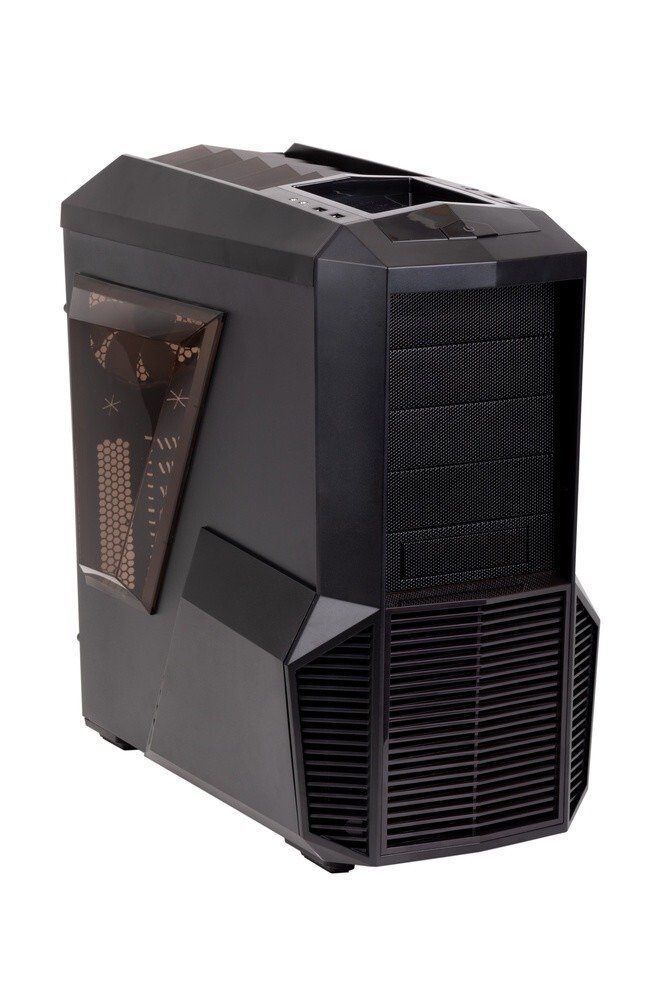
C’est le parfait compromis entre taille et puissance. La moyenne-tour vous permet d’avoir plus de libertés dans le choix de vos composants qui seront à 90 %, voire 95 % compatibles. Uniquement les carte-mères E-ATX ou XL-ATX pourraient ne pas être installables dans votre boîtier. Néanmoins, les possibilités sont déjà importantes et suffisantes pour monter un PC gamer compétitif.
Les cartes-mères au format ATX (305 x 244 mm) vous permettront un gain de puissance bien supérieur par rapport aux formats mini-ITX (170 x 170 mm) et micro-ATX (244 x 244 mm).
Vous pourrez donc concevoir un PC sans réelles limitations de compatibilité des composants et ainsi monter votre configuration selon vos besoins. De plus, cette dernière sera plus évolutive dans le futur et le montage des composants facilité par une meilleure accessibilité des emplacements.
Vous pourrez ajouter de nombreux disques durs pour stocker votre système d’exploitation Windows ou Linux sur un SSD pour une vitesse de traitement rapide et vos données, jeux et autres programmes sur des HDD ayant une limite de stockage plus importante.
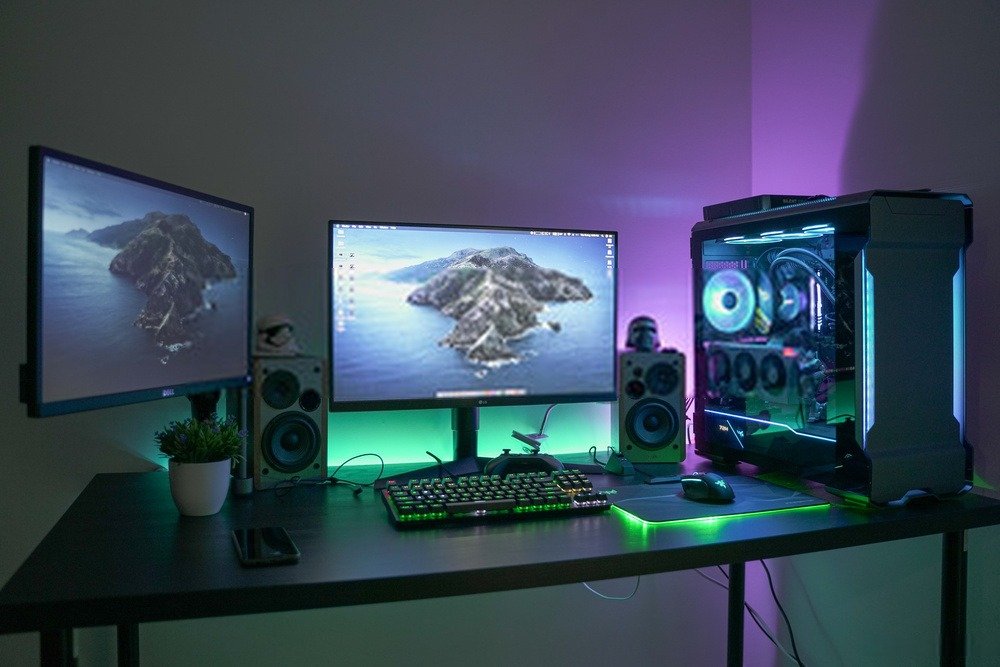
Concernant le refroidissement de votre PC, pensez à bien installer vos ventilateurs et radiateurs afin de créer une circulation de l’air optimisée. Contrairement aux mini-tours, les boîtiers de tailles moyennes (entre 35 et 45 cm de haut) peuvent certes accueillir des composants plus puissants et plus nombreux mais ils risquent de plus chauffer à l’intérieur de votre PC. Vous devrez donc faciliter l’airflow et si possible installer un système de watercooling relié à votre carte graphique ou carte-mère.
La grande tour (ATX)
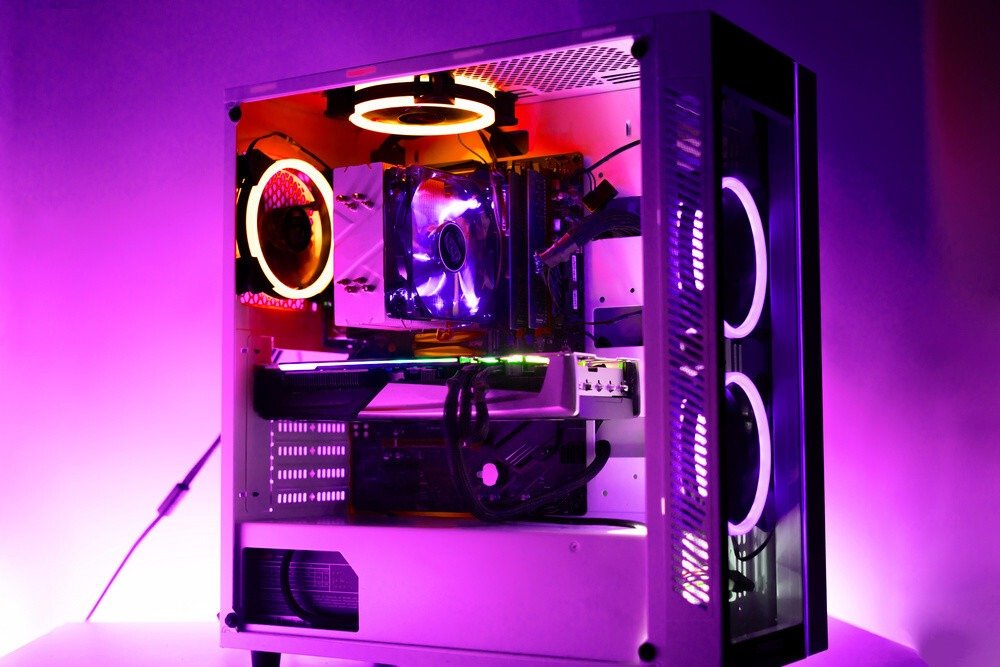
Si vous disposez d’un très gros budget et de suffisamment de place, vous pourrez monter le PC de vos rêves avec une grande tour. Ce type de boîtier permet des possibilités quasiment illimitées, prenant en charge tous les composants et pouvant parfois accueillir plusieurs cartes graphiques.
Il n’est évidemment pas conseillé pour tous les profils car l’intérêt de la grande tour est de profiter de son espace interne disponible pour monter une véritable machine de guerre. Elle est en revanche parfaite pour un PC Gaming ultra performant vous permettant de faire tourner tous les jeux en UHD, à condition bien évidemment de vous équiper des composants adéquats.
Une configuration plus puissante signifie aussi une consommation énergétique plus importante et un besoin de refroidissement efficace obligatoire. Profitez de l’espace pour organiser de la meilleure des façons votre config avec un câble management bien pensé afin de faciliter l’entrée de l’air froid et l’évacuation de l’air chaud.
Utilisez les nombreuses sorties d’aération ainsi que les emplacements de ventilateurs pour vous faciliter la tâche. Un système de refroidissement liquide est fortement recommandé pour réduire la température de votre puissante carte graphique ou tous autres composants susceptibles de beaucoup chauffer.
Après ce tour d’horizon des différentes tailles de PC disponibles, vous devez prendre en compte d’autres facteurs secondaires.
Les facteurs à prendre en compte avant d’acheter votre boîtier de PC !
Boitier silencieux ou non ?
Le premier concerne le bruit de votre PC, qui peut-être plus important sur une mini-tour qu’une grande tour, car le fait d’avoir des composants plus proches les uns des autres ne favorise pas la circulation de l’air mais augmente aussi le risque que les composants se touchent.
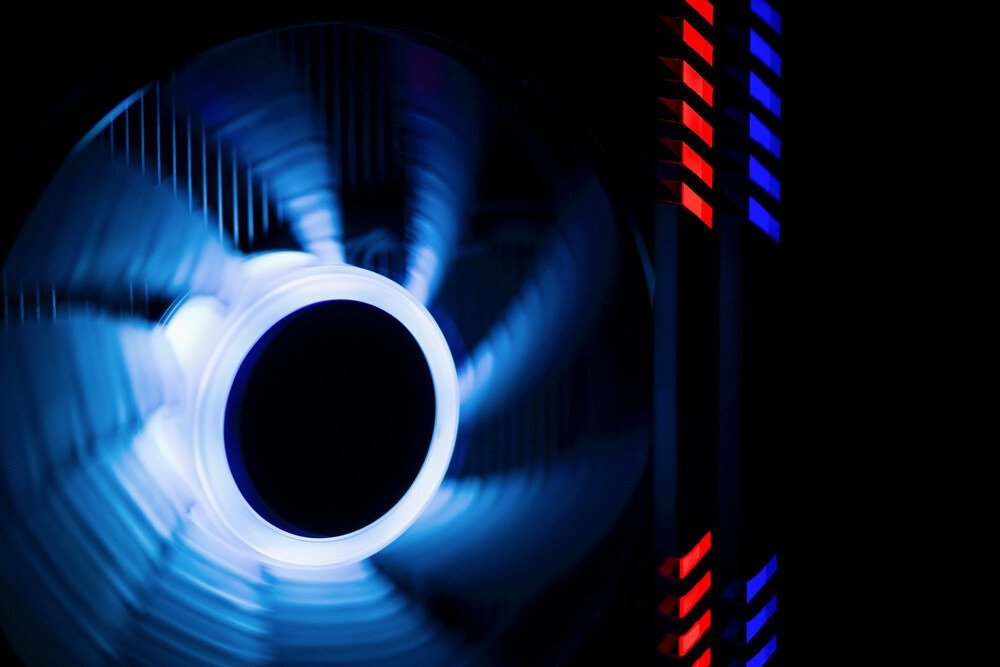
Cependant si vous n’utilisez pas votre PC pour jouer mais simplement pour regarder des films ou faire de la bureautique, il y a peu de chance que votre PC soit bruyant. Si vous désirez à tout prix avoir un PC qui ne fait aucun bruit, on vous invite à lire notre comparatif sur les boitiers silencieux.
La connectique
Le deuxième est la connectique disponible sur votre boîtier, vous permettant de connecter vos périphériques ou smartphone à votre ordinateur grâce aux ports USB. Néanmoins, ce facteur peut être variable en fonction de la gamme de votre boîtier. Un haut de gamme disposera de connecteurs récents comme des USB Type-C et 3.0 tandis qu’un milieu de gamme n’aura que des 3.0 / 2.0 et un entrée de gamme des uniquement des 2.0.
Le montage de votre boitier
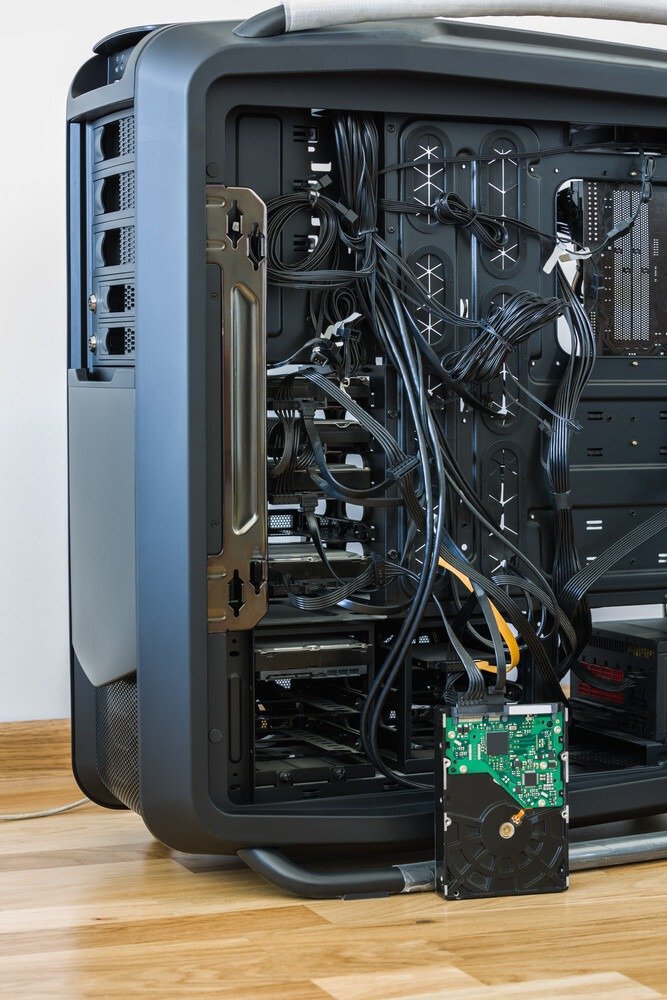
Enfin le troisième facteur est la facilité de montage de votre PC, car plus il sera petit, plus il sera difficile de le monter car il demandera une meilleure organisation de ses composants en amont et lors de son exécution. Si vous souhaitez un mini-PC mais que vous n’avez pas beaucoup (voire aucune) d’expérience dans le montage, optez pour un Barebone ou un PC entièrement prémonté. Si au contraire vous n’avez pas peur des défis dirigez-vous vers une mini-tour et créez de A à Z votre PC !





